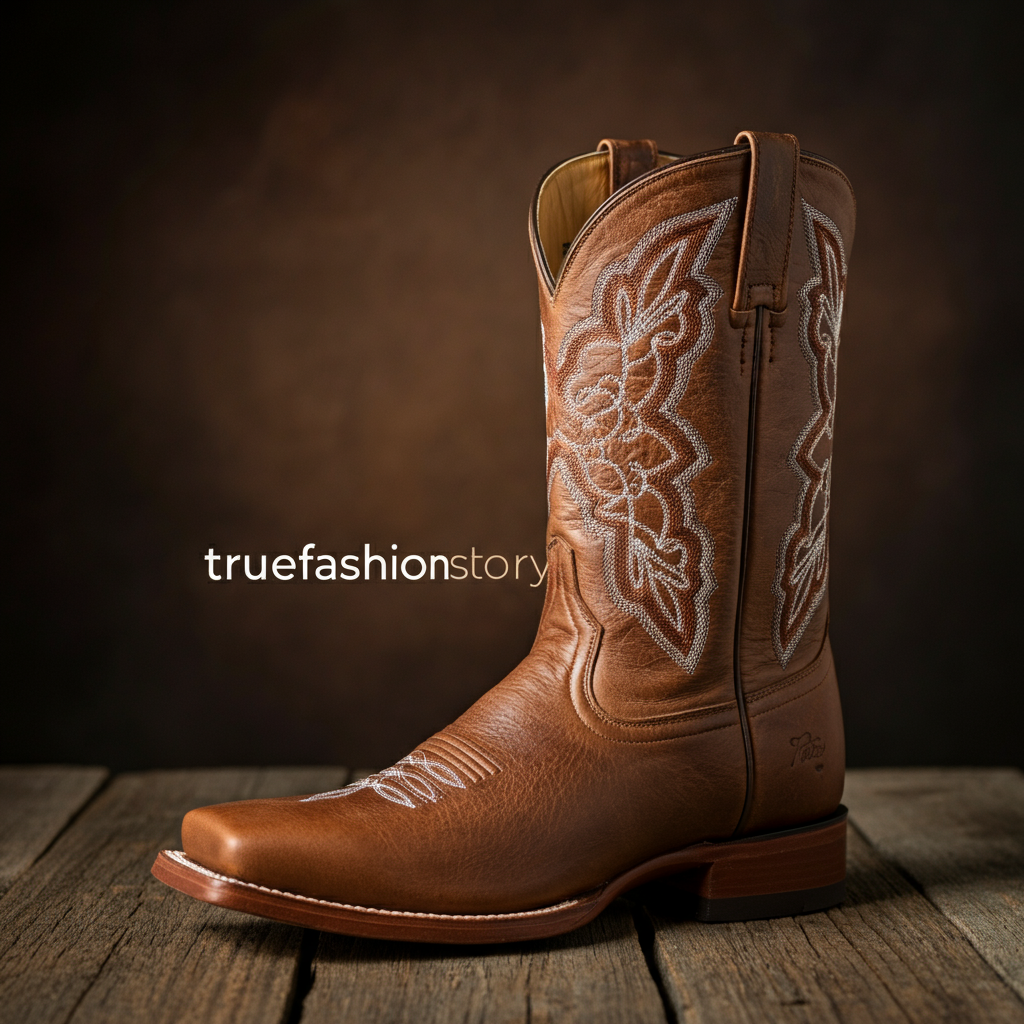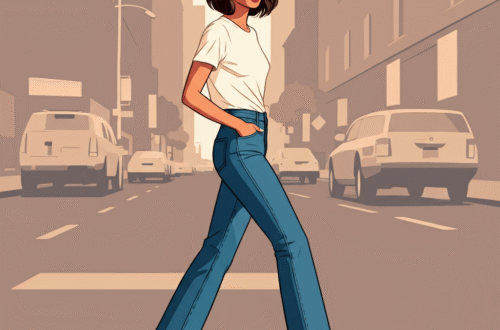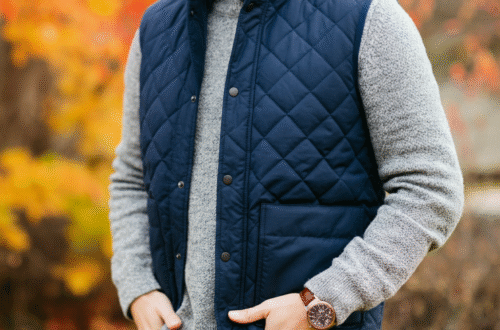Overlay boots are more than just footwear; they are a statement of artistry and personal style. These intricate boots, known for their detailed, multi-layered leather designs, have a rich history and a timeless appeal. Whether you’re a seasoned cowboy boot enthusiast or new to the world of detailed leatherwork, this guide will walk you through everything you need to know about overlay boots. We’ll explore what makes them unique, how to choose the perfect pair, and how to care for them so they last a lifetime.
Key Takeaways
- Definition: Overlay boots feature designs created by sewing multiple layers of leather onto the boot’s shaft and vamp. This technique adds depth, color, and intricate detail.
- Artistry is Key: The quality of an overlay boot lies in the precision of the stitching and the complexity of the design, making each pair a wearable piece of art.
- Versatility: While rooted in Western tradition, overlay boots can be styled for various occasions, from casual outings to more formal events.
- Proper Care is Crucial: To maintain their beauty and durability, overlay boots require regular cleaning, conditioning, and proper storage.
What Exactly Are Overlay Boots?
At their core, overlay boots are a type of footwear, typically cowboy boots, that feature a decorative technique where pieces of leather are stitched on top of the main body of the boot. Think of it as creating a mosaic with leather. Artisans cut intricate shapes from different colored or textured leathers and carefully sew them onto the boot’s shaft and foot (vamp). This method creates a raised, three-dimensional effect that is visually stunning.
This technique is the opposite of inlay, where a design is cut out from the top layer of leather and another piece is placed underneath to fill the space. With overlays, the design is built upward, adding layers and texture. This allows for an incredible level of detail, from simple floral patterns to complex narrative scenes. The craftsmanship involved is immense, requiring a steady hand and a keen eye for detail. This is why high-quality overlay boots are often considered functional works of art.
The Difference Between Overlay and Inlay
Understanding the distinction between overlay and inlay is key to appreciating the craftsmanship. While they can look similar from a distance, the construction process is fundamentally different.
- Overlay: As we’ve discussed, this involves adding layers on top of the boot’s surface. The design pieces are stitched onto the main leather, creating a raised, textured pattern. This method is excellent for bold, vibrant designs that stand out.
- Inlay: This technique involves cutting a design out of the boot’s top leather layer. A different piece of leather is then placed behind the cutout, showing through the opening. The result is a smoother, more flush surface. Inlay is often used for more subtle, intricate patterns.
Some of the most elaborate and expensive boots actually combine both techniques. An artisan might use an inlay for a background element and an overlay for a foreground detail, creating incredible depth and complexity.
The History and Origin of Overlay Boots
The tradition of decorating leather boots is deeply rooted in cowboy culture. In the late 19th and early 20th centuries, cowboys began requesting more personalized and decorative boots to stand out. Bootmakers, many of whom were skilled leather artisans, started experimenting with different techniques to meet this demand. The overlay technique emerged as a popular way to add flair and individuality.
Early designs were often simple geometric shapes or classic Western motifs like stars, eagles, and floral patterns. As the skills of bootmakers grew, so did the complexity of the designs. The rise of rodeo stars and Hollywood cowboys in the 1930s and 40s further popularized fancy boots. These public figures wore elaborate, custom-made overlay boots that became a part of their iconic image. This era cemented the overlay boot’s place as a symbol of Western style and expert craftsmanship, a tradition that continues to thrive today.
Why Choose Overlay Boots? The Appeal Explained
So, what makes overlay boots so special? The primary appeal lies in their unique beauty and the story they tell. Each stitch and layer of leather represents hours of dedicated work by a skilled artisan. Owning a pair is like owning a piece of wearable art that reflects a rich cultural heritage. They allow for an incredible range of expression; you can find designs ranging from classic Western scrolls to modern, abstract patterns.
Beyond aesthetics, high-quality overlay boots are built to last. The same attention to detail that goes into the decorative work is also applied to the boot’s overall construction. Reputable makers use premium leathers and time-tested methods like Goodyear welting, which makes the boots durable and resoleable. This means that with proper care, a good pair of overlay boots can be a companion for years, even decades. They are an investment in style, quality, and tradition.
A Look at Popular Overlay Boot Designs
The design possibilities with overlays are nearly endless. However, some classic motifs have remained popular through the generations.
Floral Patterns
Flowers are one of the most common themes in overlay work. Roses, lilies, and vines can be intricately cut and stitched onto the boot shaft, often using multiple colors to create a lifelike effect. Floral designs add a touch of elegance and can soften the rugged look of a traditional cowboy boot.
Western Motifs
Classic Western symbols are a staple of overlay boot design. This includes:
- Stars: Often seen on the pull straps or as a central theme on the shaft.
- Eagles: A symbol of freedom and power, eagles are often depicted with wings spread wide.
- Horseshoes and Spurs: These designs pay direct homage to the boot’s equestrian roots.
- Longhorn Skulls: A quintessential symbol of the American Southwest, often used as a centerpiece on the vamp or shaft.
Patriotic and Themed Boots
For those looking to make a bold statement, themed boots are a popular choice. American flag overlays are a common sight, showcasing patriotism with red, white, and blue leather. Other themes might include motifs from a specific state (like the Texas star), animals like snakes or dragons, or even custom designs that tell a personal story.
How to Style Overlay Boots
Don’t let the intricate designs intimidate you. Overlay boots are surprisingly versatile and can be incorporated into many different wardrobes. The key is to let the boots be the star of the show.
For a classic look, pair them with a good pair of boot-cut jeans. The wider leg opening allows the jeans to fall nicely over the boot shaft, showcasing the design on the foot while offering glimpses of the shaft as you walk. This is a timeless, effortless way to wear them.
For a more modern take, you can tuck skinny jeans or leggings into the boots. This puts the entire design on full display and works well for both men and women. Pair this with a simple top or a denim jacket to keep the focus on your footwear. Women can also style overlay boots with dresses and skirts, especially for a bohemian or festival-inspired look. A flowy dress and a pair of detailed boots create a beautiful contrast. Exploring different styles on platforms like the truefashionstory.comBlog can provide even more inspiration.
Choosing the Right Pair of Overlay Boots
Selecting the perfect pair of overlay boots is a personal journey. The first factor to consider is the design. Choose a pattern and color scheme that speaks to you and complements your personal style. Are you drawn to classic floral patterns, or do you prefer a bold, graphic design?
Next, consider the fit. A boot should be snug across your instep, with your heel slipping slightly when you first put it on. This heel slip will decrease as the leather sole breaks in. Make sure your toes have enough room to wiggle without being cramped. It’s always best to try boots on in the afternoon, as your feet tend to swell slightly throughout the day.
Finally, think about the boot’s construction. Look for high-quality materials like full-grain leather. Check the stitching on the overlays; it should be tight and even. A well-made boot will feel substantial and balanced in your hands.
Material Comparison: Exotic vs. Traditional Leathers
The type of leather used for the boot and the overlays significantly impacts the look, feel, and price.
|
Feature |
Traditional Leathers (Cowhide, Goat) |
Exotic Leathers (Ostrich, Caiman, Python) |
|---|---|---|
|
Durability |
Very high, especially cowhide. |
Varies. Ostrich is very durable; python requires more care. |
|
Appearance |
Classic, smooth or slightly textured. |
Unique, distinctive patterns and textures. |
|
Flexibility |
Breaks in well over time. Goat is soft from the start. |
Ostrich is exceptionally soft and flexible. Caiman is stiffer. |
|
Cost |
More affordable. |
Significantly more expensive due to rarity and difficulty. |
|
Maintenance |
Standard cleaning and conditioning. |
Often requires specialized conditioners. |
Caring for Your Overlay Boots
Proper care is essential to protect your investment and keep your boots looking their best. The detailed nature of overlays requires a bit of extra attention.
Cleaning Your Boots
- Dust Off: Use a soft brush to gently wipe away any loose dirt and dust. Pay special attention to the areas around the stitched overlays.
- Wipe Down: Use a slightly damp cloth to wipe down the leather. Avoid using too much water, as it can damage the leather.
- Deep Clean: For tougher dirt, use a cleaner specifically designed for leather. Test it on a small, inconspicuous area first.
Conditioning the Leather
Conditioning keeps the leather soft, prevents it from drying out, and protects it from cracking. Use a high-quality leather conditioner every few months, or more often if you live in a dry climate. Apply a small amount with a soft cloth and rub it in using a circular motion. Be gentle around the overlay stitching. Use a separate, clean cloth to buff off any excess.
Proper Storage
When you’re not wearing your boots, store them properly to help them maintain their shape. Use boot trees to keep the shafts upright and prevent creasing. Store them in a cool, dry place away from direct sunlight, which can fade the colors of the leather over time.
Frequently Asked Questions (FAQ)
Q: Are overlay boots comfortable for everyday wear?
A: Yes, once broken in. High-quality boots are designed for comfort, with supportive arches and durable soles. The key is ensuring you have the correct fit from the start.
Q: Can overlay boots get wet?
A: It’s best to avoid soaking them. While they can handle a little rain, excessive water can damage the leather and cause the colors to bleed. If they do get wet, let them air dry naturally away from direct heat.
Q: How much do overlay boots cost?
A: The price can vary dramatically. A machine-stitched pair with simple overlays might cost a few hundred dollars. A fully handmade pair with intricate, multi-colored designs from a renowned bootmaker can cost several thousand dollars or more.
Q: Can the overlays be repaired if they get damaged?
A: Yes, a skilled boot repair specialist or the original bootmaker can often repair damaged overlays. They can restitch loose sections or even replace a damaged piece of leather.





